The Planets & Their Mythology: The Moon
In this series, I will be exploring the basics of what each planet in astrology represents by looking at both the astronomical properties of each planet as well as the mythology associated with it. In my second part of this series, I will be focusing not on a planet per se but a satellite, our Moon.
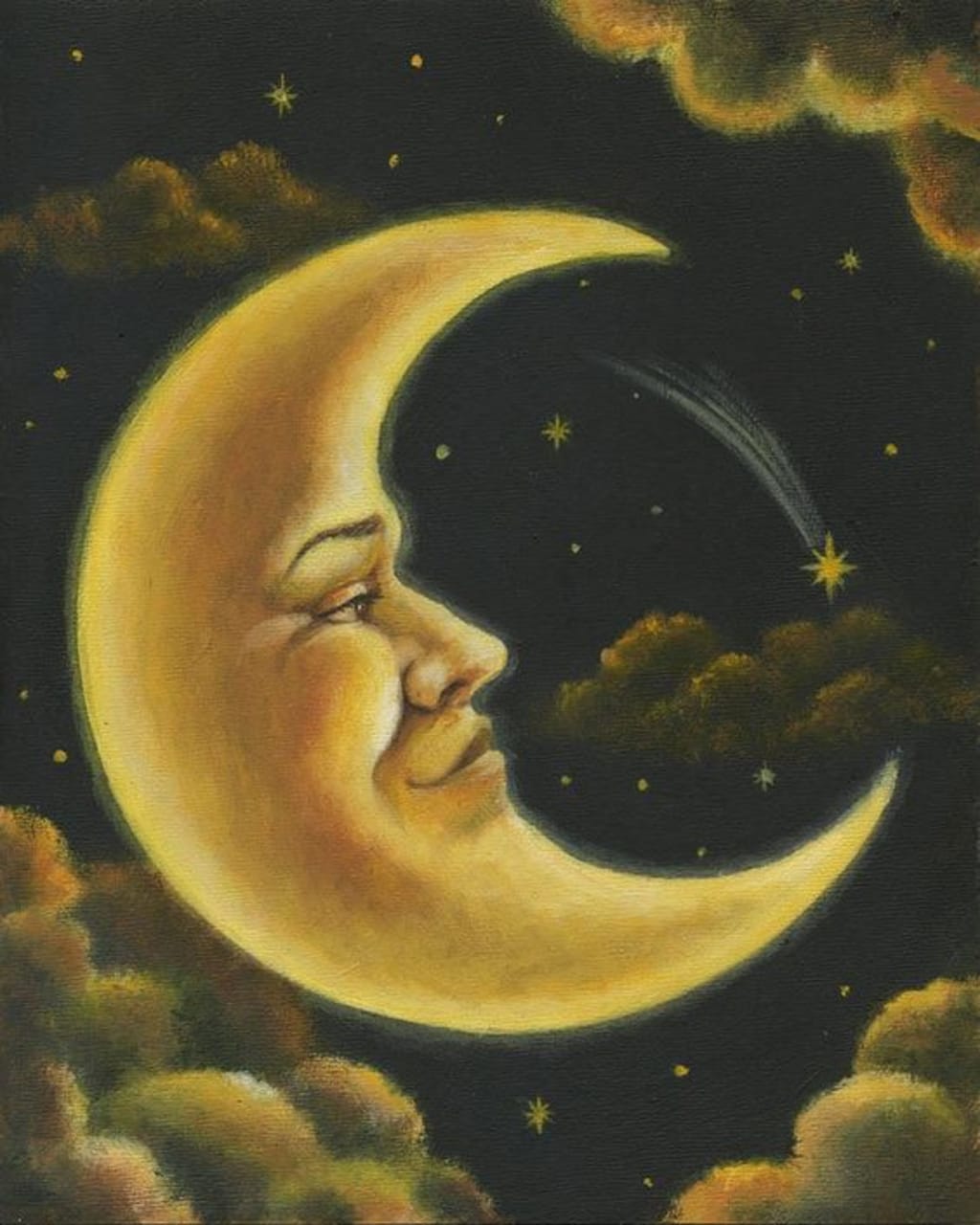
What is the Moon?
The Moon is the Earth's only satellite, orbiting around the Earth every 27 days, while the Earth orbits the Sun. In astrology, it is considered one of the two "luminaries," as it is appears to be the biggest and brightest object in the night sky. However, it does not shine on it's own. It simply reflects off light from the Sun. This gives the Moon a "passive," or receptive nature in contrast to the Sun's more "active" one. While the Sun represents the conscious or outer self, the Moon represents the inner emotional self or the subconscious. This makes sense, as the Moon can be more or less only be seen at night, carrying an association with things that are dark or hidden from view. Furthermore, Moon's actual appearance is grey, rocky and covered with craters from impact, which attests to it's "fragile" and sensitive nature (yet in other ways strong and capable of endurance).
The Moon goes through many phases. From the vantage point of the Earth, it appears to change shape and size. When in conjunction with the Sun, it appears to be invisible, which we call a "New Moon." As it moves from the Sun, it gains visibility. We call this a "Waxing Moon." These days are said to be good for initiating new beginnings, starting new projects or manifesting things into our lives. First, it's a tiny sliver called a "Crescent Moon." Then it's a half-moon called a "Quarter Moon." When it starts to reach fullness, we call it a "Gibbous Moon." When it's facing the Sun on the opposite side of the zodiac, that's when we have a "Full Moon." Full Moons are especially powerful and historically, believed to bring about crazy events or make people do crazy things. After the Full Moon, it starts to get smaller. First, a Gibbous, then a Quarter, then a Crescent and back to being a New Moon again. We call this a "Waning Moon." These days are said to be good for endings and letting things go. From a symbolic perspective, the Moon's phases give it a very changeable and sometimes wild or untamed nature. It is always in a state of flux, uncontrolled by the constraining conventions of society.
From a scientific perspective, the Moon's gravity effects the movement of the tides, the ebbs and flows of the sea. It may be argued that the Moon's influence over tides extends to human beings as well since our bodies are made of 60% water. The Moon has also been proven to have influence on fertility and menstrual cycles, in not just humans but some animals as well. Perhaps, this is why the Moon is so closely associated with women and particularly motherhood in astrology. In addition to motherhood, the Moon is also associated with the home and family, generally, as well as early childhood, nostalgia and memory. Perhaps, this has something to do with the Moon's close distance to the Earth, but also, because the Moon helps maintain the magnetic field that helps protect our planet from charged particles coming from the Sun. This is what helps our planet sustain life. No wonder, then, that the Moon, in astrology, is known for its protective and nurturing qualities. It is associated with our deepest needs, the things that make us feel safe and secure.
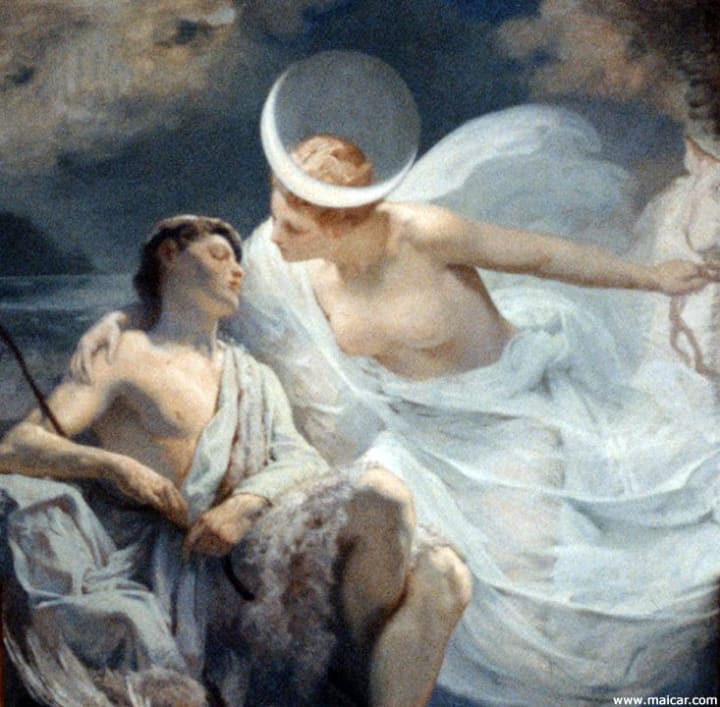
The Moon's Mythology
Like the Sun, the Moon has been worshipped by many cultures throughout human history. While some lunar deities (such as the Germanic Mani or Tsukoyomi of the Japanese Shinto religion) have been male, the majority of them have been female, probably because many cultures have noticed the link between the lunar phases and the female menstrual cycle. While I could write a whole book about the mythology of the Moon throughout the world (and would love to!), for simplicity's sake, I'm going to focus on the mythology of Ancient Greece and Rome, since that's where most of our modern understanding of astrology comes from.
In Ancient Greek religion, Selene (or Luna in Ancient Rome) was the original Moon Goddess. She was the sister of Helios, the Sun God, and Eos, Goddess of the Dawn. She was worshipped at the New and Full Moon and known for wearing a crescent moon on her head as she drove a two-horse chariot into the night sky. She is known for bearing the children of Endymion, a beautiful youth who was put to eternal sleep by Zeus. Selene loved him and went to visit him every night. Aside from that, not much seems to be known about her.
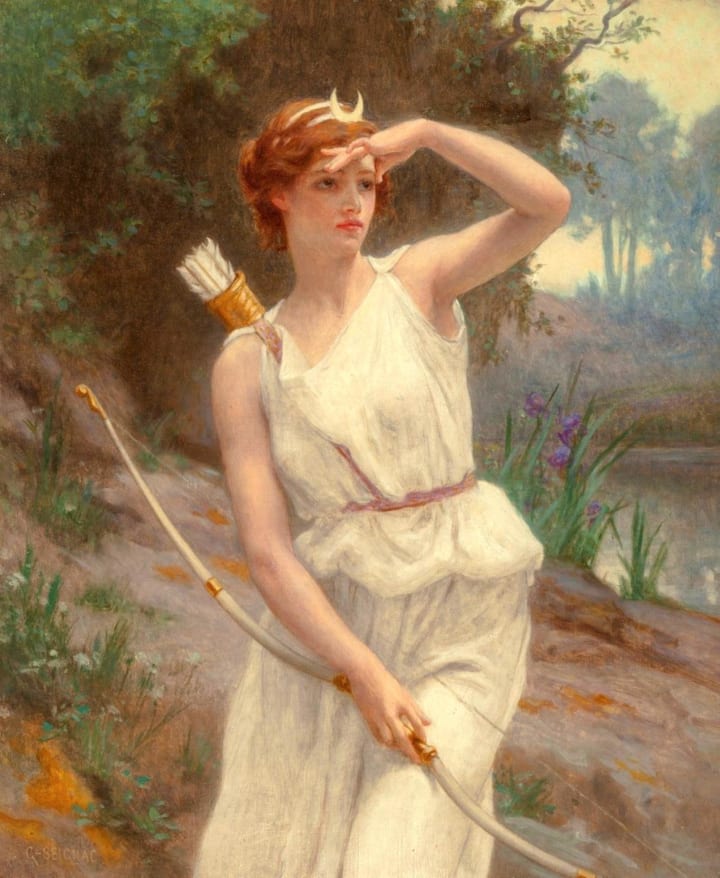
More is known about Artemis and her Greek equivalent, Diana. Artemis was the Greek Goddess of the hunt, animals and the wilderness and seemed to become associated with the Moon later. Deer were especially held sacred to Artemis, as they were the first animals she hunted. She was the daughter of Zeus and Leto, and the twin sister of Apollo, who was associated with the Sun. True to her association with the Moon, she was worshipped as the goddess of childbirth and midwifery, helping many women, including her own mother, give birth. However, she herself remained a virgin, attracting many men but choosing to remain independent. She was also a defender and protector of young girls and women. In one story, she helped save a girl who had been raped. In many stories, Artemis shoots down rapists and other predatory men with her bow and arrow or otherwise has them attacked by her hounds. Or in some stories, she would do this to men who claimed they were better hunters than her. While she was known for relieving women of disease, she was believed to bring disease too and deaths that occurred during childbirth were attributed to her. As a moon goddess, she was pictured with a long robe and veil covering her head.
However, the Roman Diana was linked not only to Artemis but to Hecate as well. Hecate was the Greek Goddess of crossroads, magic, ghosts, and witchcraft, as well as the light and night. She was a three-headed-goddess who held the keys to unlock the gates between realms, including the gates of death. She was worshipped as a goddess of the underworld and held the role of guiding souls in their journey into the afterlife in addition to guiding them in journeys to dangerous places on earth. She was also believed to protect her followers against evil spirits here in this life. She also held knowledge of herbs and plants, both medicines and poisons. As a nocturnal goddess, she became associated with the Moon as well as magic, mystery and witchcraft.
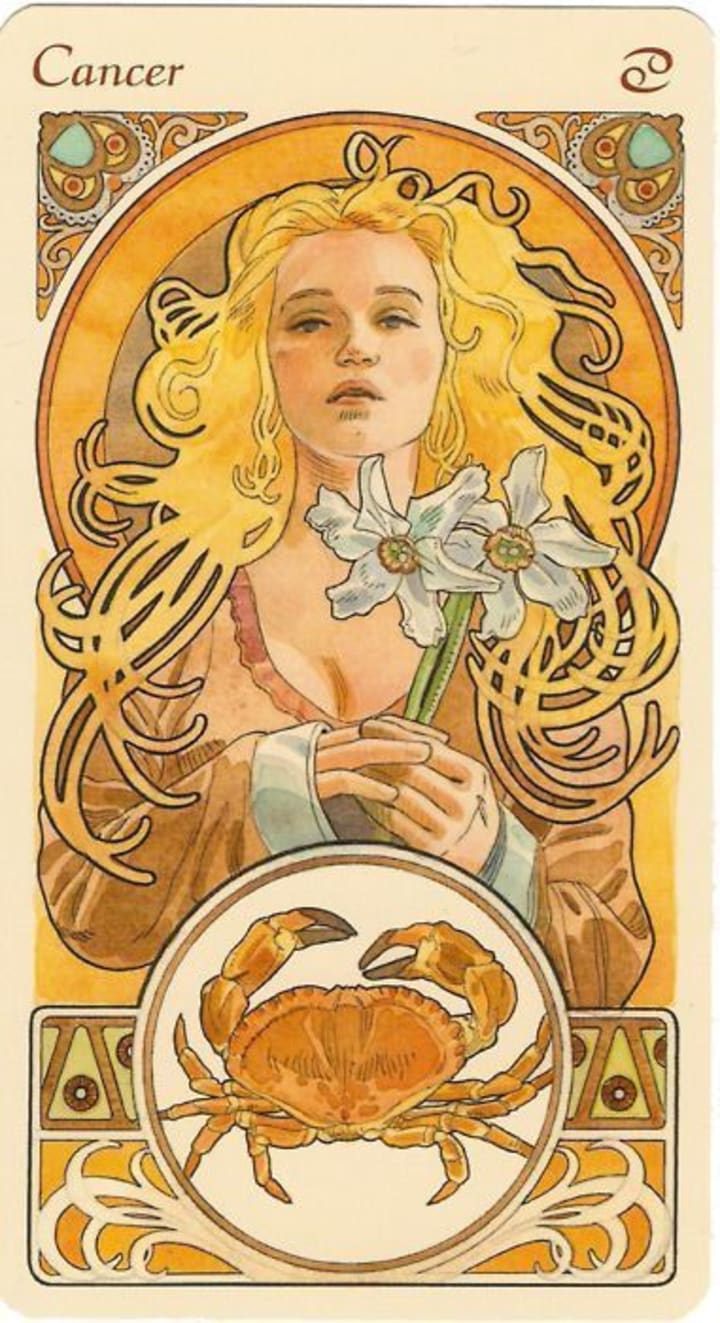
Dignities & Debilities
The Moon rules the sign of Cancer, a cardinal water sign represented by the image of a crab, a soft and vulnerable creature protected by its hard sturdy shell. As I discussed in this post, the Sun was given rulership over Leo due to Sirius' heliacal rising corresponding with the Sun's transit through this sign. As the other luminary, the Moon was given rulership over Cancer, the sign next to Leo, probably because Cancer Season corresponds with the Summer Solstice in the Northern Hemisphere and the longest days of the year. Essentially, the Moon is strong in Cancer, a sign known for its moody and emotional nature as well as it's protectiveness and desire for roots or connection.
Meanwhile, Taurus is the sign of the Moon's exaltation. Often, the Moon is said to be exalted at 3 degrees Taurus specifically. Given Taurus' association with security and stability, it makes sense for the Moon to be exalted in this sign, a fixed earth sign ruled by Venus and represented by the image of the bull or cow. Like Cancer, Taurus seeks to feel comfortable and settle down roots, and the Moon performs strongly in this sign as well.
To a lesser extent, the Moon is traditionally believed to be dignified in the first decan of Libra, second decan of Sagittarius and third decan of Aquarius. It lords over the earth triplicity by night.
In contrast, Capricorn, ruled by Saturn, is said to be the sign of the Moon's detriment while Scorpio, ruled by Mars, is said to be the sign of it's fall. Comfort and vulnerability do not come easily for these two signs. As a water sign, the Moon in Scorpio is especially prone to being rid with conflict and intense emotions or desires that they don't know how to deal with properly. Meanwhile, the earthy Capricorn is not a very emotional sign to begin with and those who have the Moon in this placement are often forced to deal with hard work or responsibility from a very young age. Both signs are associated with control and may have a hard time expressing their feelings or being vulnerable because of that.
Now that's the signs. As far as houses are concerned, according to the planetary joys schema, the Moon has it's joy in the 3rd house, traditionally known as the "Place of the Goddess." The 3rd house rules over many things: the neighborhood and local places or travels, siblings and other relatives, communication and media, and even alternative or lesser known religions! Essentially, I would say the 3rd house is about the habitual ebbs and flows of everyday life.
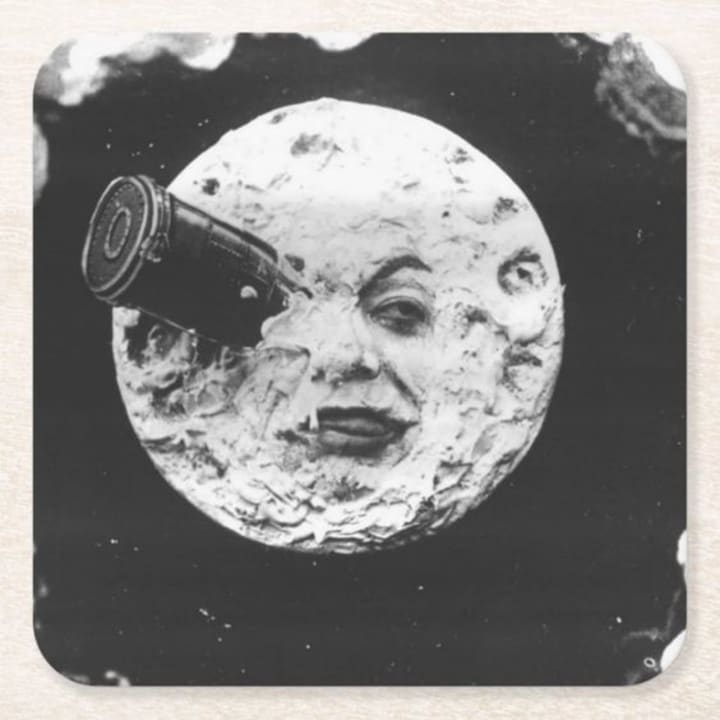
Conclusion
The Moon is a cool, moist, phlegmatic, nocturnal and feminine planet, according to the traditional rulers of astrology. Like the Sun, it is neither completely benefic or completely malefic. It's beneficence depends on the amount of light it gives and often, it is believed to be most benefic between the New and Full Moon phases when it is waxing.
The Moon signifies the mother, and sometimes, especially in a man's chart, women in general. Similarly, it rules fertility, babies, and childhood. While the Sun represents the King, sometimes the Moon represents the Queen, but in mundane astrology, it rules the common people. It rules over pilgrims, sailors, fishermen, huntsmen, messengers, dreamers. and drunks. It also rules the home or place of residence, rivers, fountains, baths, ponds and pools, as well as port towns, fields, highways, and desert places. It's day is Monday and it is associated with all things pale, white and silver. In the body, it rules the gut, stomach, breasts, and reproductive organs.
In psychology astrology, the Moon is representative of our subconscious or inner selves. People with the Moon prominent in their horoscopes are believed to be soft, tender, emotional, sensitive, intuitive, flighty, changeable, caring, peace-loving, creatures of habit, and sometimes round, plump or 'fleshy' in appearance. The Moon is especially linked with our emotions, our instinctive habitual responses, and what we need to feel comfortable and safe in life, as well as our dreams and early childhood experiences. It's the side of the mind that is irrational or intuitive. While the Sun is symbolic of how we behave in public, it is believed that the Moon is more reflective of who we are in private. As the luminary of the night, it shines light on the dark, the hidden and the mysterious, the 'lunatic' parts of ourselves that we don't show so readily to others. It's sign and house placement in a birth chart will tell you about a person's deepest needs and emotional processes, as well as their early upbringing and the influence of their family. I hope this article helped to shed some light on the topic and help people better understand how to interpret it in some way.
About the Creator
Kaitlyn Maura
My name’s Kait. I would define myself mainly as a truth seeker. I write about a lot of things, primarily astrology, religion & spirituality, relationships and social issues.
Website: https://www.astrologybykait.com/






Comments (1)
The recent [Full Moon/New Moon] in [Zodiac Sign] has charged your intuition and unlocked your hidden gifts. But you need to learn how to use this to your advantage… and what crucial steps to take next. >> This wonderful complimentary Moon Reading will help guide you. The reading is 100% personalized to you and uses your birthdate to determine the zodiac sign and phase of the Moon on the day you were born. You will discover the Moon’s powerful influence on your life, personality and potential. This reading will light the way to your true path forward, even when it feels like you are unsure of your next steps. >> Get your free personalized video Moon Reading here: https://bit.ly/3w7fPut